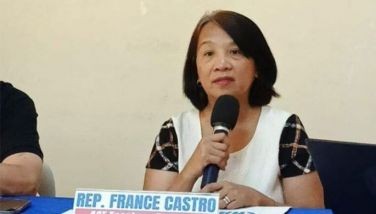Dinagat Festival: Deep-rooted religious and socio-cultural celebration
Aside from being the consultant, for the second time, I have been invited to judge the Dinagat Festival. Thanks to Mayor Teche Sitoy Cho for another experience to witness the creativity, flexibility, cooperation, and strong faith of the Cordovanhons.
It was the first time that the festival was held in an open venue, constructed facing the sea, the Cordova Centennial Area, where it was swarmed by a big audience.
The Dinagat Festival was first called the Bakasi Festival largely due to the fact the town is abundant in eels, although they also have copious other sea resources. It was first held in 1999, and so next year it will be their 20th anniversary.
The festival has already drawn a crowd not only from the town itself but also from neighboring towns, cities, and even beyond.
Its popularity owes to its being the work of an angling society of this region. Praised with religious relationship by holding it in honor of the town's benefactor, Señor San Roque, it was first composed by the town's neighborhood government authorities to praise the wealth of the town's assets, while in the meantime advancing the town by drawing in visitors and guests from outside.
Through the years the preparation of the Dinagat Festival has undergone changes. Changes in categories, participating contingents, the criteria for judging, and others have been undertaken to improve the celebration. Currently included in the Department of Tourism‘s list of recognized festivals in the Philippines, the festival has gradually drawn foreign spectators.
The categories of the festival are Best in Street Dancing, Festival Showdown, Festival Queen, and Best in Audio Van. The 13 barangays of the town are grouped into five clusters for the competition.
The Dinagat Festival is an expression of cultural values that make the Cordovanhons proud of their socio-economic heritage. These attitudes and values are hospitality, cooperation or solidarity, creativity and desire to be happy.
It showcases the fishing culture of the people at the same time pays homage to the patron saint for his continuous protection against pestilence.
An ethnographic study conducted by local researchers has revealed that the sources of local knowledge on Dinagat Festival were the organizers, elders in the community, educational institutions, parish workers, barangay and municipal officials. Since the participants were mostly students, the youth, the townsfolk, the community, the festival was a way of educating them about the socio-cultural dimensions of the festival. Research done by the choreographers enhanced the knowledge and appreciation of the distinct culture of the people who have special affinity with marine life.
The changes that occurred over the time were highly influenced by commercialism, tourism, religious meanings and technological advancement. Just like other big festivals such as the Sinulog, there is a constant challenge among organizers to make Dinagat Festival relevant to the people while appealing to the visitors at the same time. But such relevance will only remain if they are conscious of the very anchor of the celebration and that is its unwavering faith and acknowledgement what nature, what the sea, has provided them. This unique story of the place projected with pomp and grandeur will appeal to non-residents.
Congratulations to all the winners and to those who supported the main event! Long live to the local officials headed by Mayor Teche Sitoy Cho, the men and women of the local tourism, and the Cordovanhons!
- Latest
























